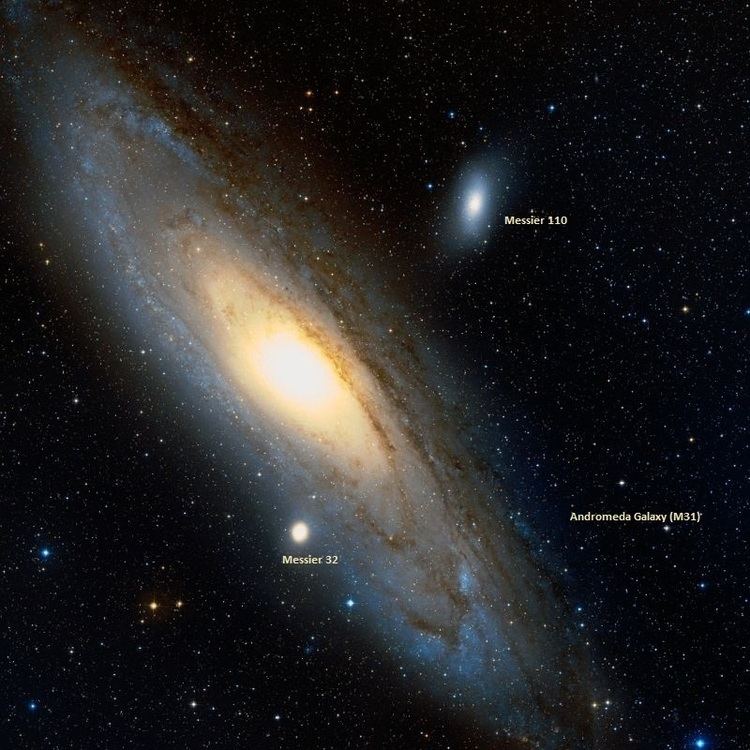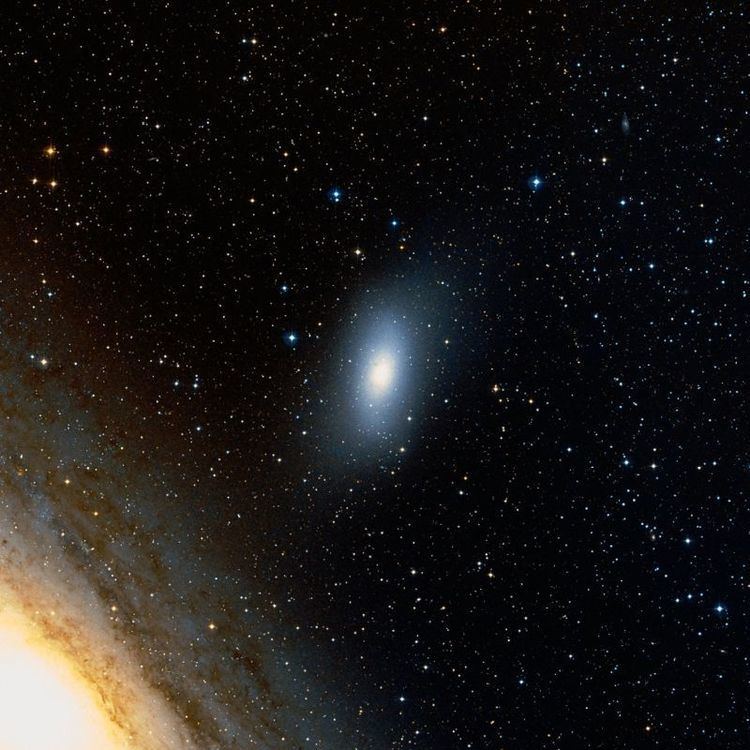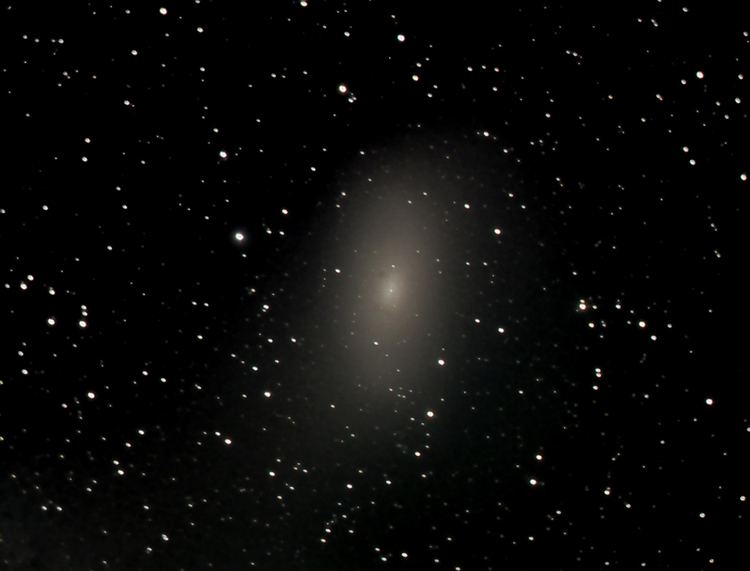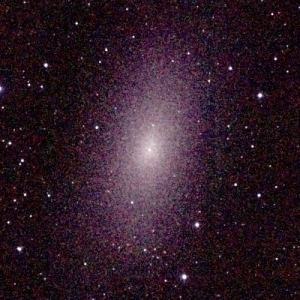Distance to Earth 2.674 million light years Magnitude 8.92 Apparent magnitude (V) 8.92 | Apparent mass ~9.3 billion M☉ | |
 | ||
Coordinates RA 0h 40m 22s | Dec +41° 41′ 7″ Similar Messier 32, Messier 105, Messier 109, Messier 103, Messier 108 | ||
Messier 110
Messier 110, also known as NGC 205, is a dwarf elliptical galaxy that is a satellite of the Andromeda Galaxy. M110 contains some dust and hints of recent star formation, which is unusual for dwarf elliptical galaxies in general.
Contents

History
Although Charles Messier never included the galaxy in his list, it was depicted by him, together with M32, on a drawing of the Andromeda galaxy; a label on the drawing indicates that Messier first observed NGC 205 on August 10, 1773. The galaxy was independently discovered by Caroline Herschel on August 27, 1783; her brother William Herschel described her discovery in 1785. The suggestion to assign the galaxy a Messier number was made by Kenneth Glyn Jones in 1967.

A few novae have been detected in this galaxy, including one discovered in 1999 by Johnson and Modjaz, and another detected in 2002, by Nakano and Sumoto. The latter, designated EQ J004015.8+414420, had also been captured in images taken by the Sloan Digital Sky Survey (SDSS) in October, 2002.
Unlike M32, NGC205 does not (as of 2005) show evidence for a supermassive black hole at its center.



